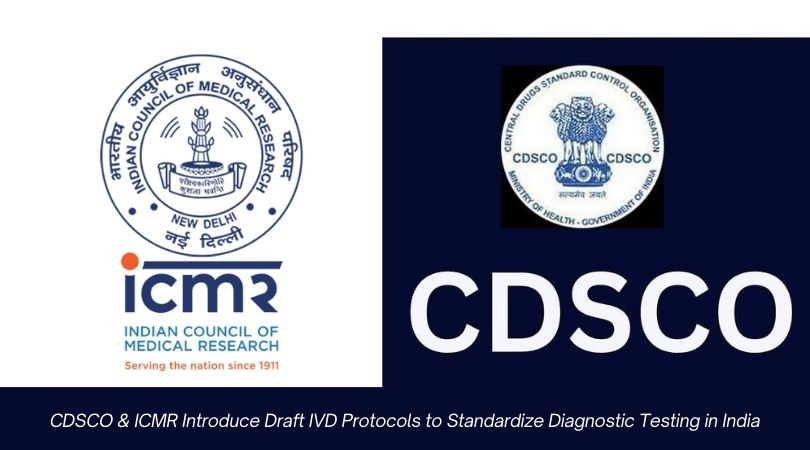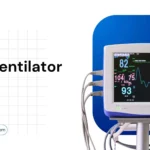13th August 2025, India
Background
In a major boost to India’s regulatory and healthcare ecosystem, the Central Drugs Standard Control Organisation (CDSCO), in partnership with the Indian Council of Medical Research (ICMR) on a strategic level, released a series of draft standard evaluation procedures in early 2025 for the benefit of facilitating the licensing and regulatory review of In Vitro Diagnostic (IVD) devices under the Medical Devices Rules, 2017. It was a landmark move for India’s diagnostics industry, considering that India is attempting to reposition itself as a global hub for high-quality medical technology and life sciences manufacturing.
With the addition of systematic protocols both for performance testing (placing focus on analytical sensitivity, specificity, accuracy, and reproducibility in controlled laboratory conditions) as well as field testing (consideration of real-world environment in diverse settings and population environments), the CDSCO and ICMR aim to provide an assurance that all diagnostic products entering the Indian market undergo the same and scientifically established test protocols employed for assessment. These guidelines are not only regulatory checklists but more importantly baseline standards to improve the quality of diagnostic equipment, thereby safeguarding public health and reinforcing confidence in the country’s diagnostic system. Second, their publication comes at a time when global focus on readiness for new infectious disease outbreaks is at its highest ever, yet another reason for the need for a robust diagnostic infrastructure. The new standards under development, currently open to public and stakeholder comments, are likely to redefine the compliance framework for IVD manufacturers, particularly by making regulatory paths more transparent and creating less uncertainty in product validation processes.
The program is one of a wider government agenda of promoting indigenous innovation, lowering the import burden, delivering better patient outcomes, and aligning India’s diagnostic test standards with international best practices.
Key Elements of the Draft Protocols
- Comprehensive Evaluation Framework
The draft guidelines set high standards for both performance testing (laboratory-based assessments of accuracy, sensitivity, and specificity) and field testing (evaluation of real-life utility) of IVD devices
- Targeted Diagnostics Included
The scope of these protocols initially covers high-priority infectious diseases such as:
- Chikungunya IgM ELISA / Rapid Diagnostic Tests (RDTs) / Real-Time PCR
- Dengue NS1 and IgM (ELISA, RDTs, combo formats), Real-Time PCR
- Zika Virus Real-Time PCR and related diagnostic tools, including comprehensive field validation
Why This Matters: Strategic & Regulatory Significance
- Enhancing Diagnostic Integrity
So far, testing protocols for IVD products have differed comprehensively, which has resulted in unequal quality criteria. The new collective protocols aim to improve the situation by requiring scientifically proven and consistent testing criteria. This is of great importance in order to allow only accurate and efficient diagnostics on the market.
- Increasing Transparency & Trust
The collaborative development of these protocols by ICMR and CDSCO adds weightage and seriousness to the regulatory process. Having clear-cut expectations, both the patients and the healthcare providers can have increased faith in the performance and reliability of the approved diagnostic tools.
- Facilitating Local Manufacturers & Laboratories
By setting down clear and consistent evaluation criteria, the guidelines enable Indian manufacturers and diagnostic labs to conform their processes to regulatory requirements right from the beginning. This not only reduces rejections and delays in the process of approval but also stimulates domestic innovation in the realm of diagnostics.
- Enhancing Public Health Capabilities
The focus placed on diseases like Dengue, Zika, and Chikungunya is reflective of the protocols’ ability to strengthen India’s public health surveillance and outbreak response capabilities. Credible and quick diagnostics are useful instruments in epidemic control and reducing disease burdens.
Regulatory Pathway Insights
According to the Medical Devices Rules, 2017, classification and licensing of IVD devices is bifurcated as follows:
1.Central Licensing Authority (CDSCO) regulates and licenses Class C and D IVDs (high-risk devices) such as import, manufacturing, and performance testing.
2.State Licensing Authorities control Class A and B IVDs (low- to moderate-risk devices), with functions revolving around local manufacturing and distribution.
The new draft protocols will work within this current framework, providing performance benchmarks to evaluate both pre-market applications and post-market surveillance activities.
Next Steps & Outlook
Following the end of public comment in February 2025, CDSCO and ICMR will review stakeholder comments and publish the final draft of the protocols. The finalized guidelines will be included in the national regulatory framework for IVD approvals.
Once finalized, these guidelines will become mandatory for all performance validation and field trials that are submitted for IVD approval. Manufacturers and testers have to strictly follow the recommended formats and standards. Organizations are invited to start realigning their research, documentation, and test protocols with immediate effect. Early adoption of these standards will minimize time-to-market and enhance success in approvals.
Strategic Takeaways
|
Key Points |
Strategic Insight |
|
Regulatory Clarity |
Uniform evaluation pathways reduce ambiguity and increase predictability. |
|
Trust in Diagnostics |
Standardization boosts credibility of IVD products and fosters clinician confidence. |
|
R&D Alignment |
Manufacturers benefit from clearer guidance, enabling compliance-driven innovation. |
|
Public Health Readiness |
Rapid, accurate diagnostics aid in faster outbreak detection and response. |
|
Market Access Advantage |
Early adopters of the protocols may gain competitive advantages in approvals. |
Conclusion
The publication of these draft protocols constitutes a pivotal milestone in India’s regulatory environment for IVDs. Instead of being a technical enhancement, it constitutes a strategic commitment to public health, scientific integrity, and industrial growth.
Through harmonization of evaluation techniques across the board, India is not only building confidence in diagnostic accuracy but also aiding its vision to be a global center of high-quality medical devices. After being put into practice, the protocols will create a culture of confidence, innovation, and responsibility enabling manufacturers, healthcare professionals, and above all, patients.










